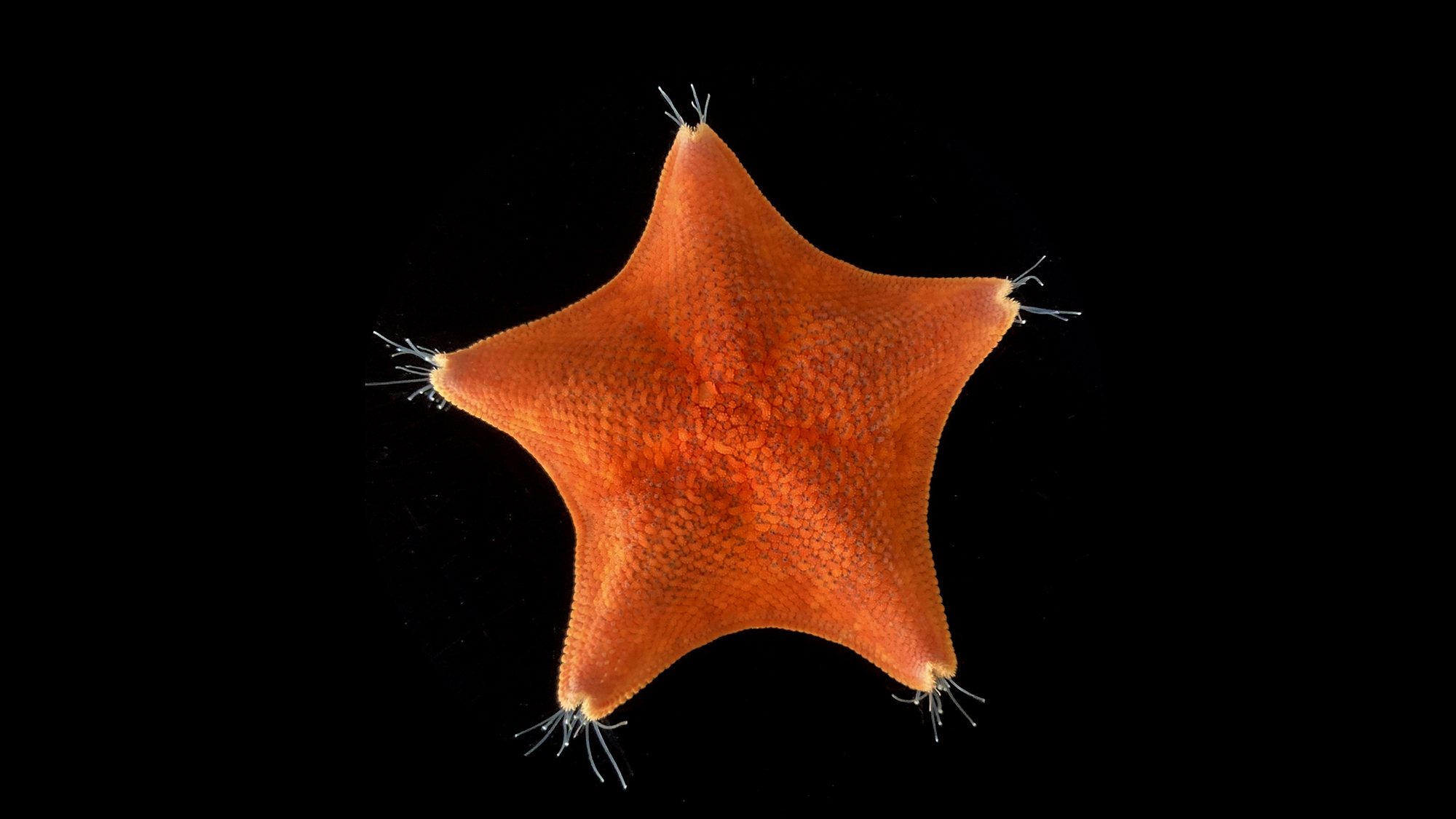

When looking at a sea star–or starfish–it’s not really clear which part of its identical five pointed body is considered its head. This question has puzzled biologists for decades, but some new research says that a starfish’s whole body could function like a head. The findings are described in a study published November 1 in the journal Nature and might have solved the mystery of how sea stars and other echinoderms evolved their distinctively shaped bodies.
[Related: This strange 500-million-year-old sea urchin relative lost its skeleton.]

Searching for heads and trunks
Sea stars are invertebrates that belong to a group of animals called echinoderms.This group also includes sea urchins and sand dollars and they all have bodies that are arranged in five equal and symmetric sections. Early in their evolution, echinoderms had a bilaterally designed ancestor with two mirrored sides more like a human’s.
“How the different body parts of the echinoderms relate to those we see in other animal groups has been a mystery to scientists for as long as we’ve been studying them,” Jeff Thompson, a co-author of the study and evolutionary biologist at the University of Southampton in the United Kingdom, said in a statement. “In their bilateral relatives, the body is divided into a head, trunk, and tail. But just looking at a starfish, it’s impossible to see how these sections relate to the bodies of bilateral animals.”
In the new study, an international team of scientists compared the molecular markers in sea stars with a wider group of animals called deuterostomes. This group includes echinoderms like sea star and bilateral animals including vertebrates. Deuterostomes all share a common ancestor, so comparing their development can offer clues into how echinoderms evolved their more unique five-pointed body plan.
They used multiple high-tech molecular and genomic techniques to see where different genes were expressed during a sea star’s development and growth. Micro-CT scanning also allowed the team to understand the shape and structure of the animals in closer detail.
Sea star mapping
Team members from Stanford University, the University of California, Berkeley, and Pacific BioSciences, used techniques called RNA tomography and in situ hybridization to build a three-dimensional map of a sea star’s gene expression to see where specific genes are being expressed during development. They specifically mapped the expression of the genes that control the growth of a sea star’s ectoderm, which includes its nervous system and skin.
They found gene signatures associated with head development almost everywhere in juvenile sea stars. The expression of genes that code for an animal’s torso and tail sections were also largely missing.
[Related: What’s killing sea stars?]
“When we compared the expression of genes in a starfish to other groups of animals, like vertebrates, it appeared that a crucial part of the body plan was missing,” said Thompson. “The genes that are typically involved in the patterning of the trunk of the animal weren’t expressed in the ectoderm. It seems the whole echinoderm body plan is roughly equivalent to the head in other groups of animals.”
The molecular signatures that are typically associated with the front-most portion of an animal’s head were also localized towards the middle of each of the sea star’s five arms.
“It’s as if the sea star is completely missing a trunk, and is best described as just a head crawling along the seafloor,” study co-author and Stanford University evolutionary biologist Laurent Formery said in a statement. “It’s not at all what scientists have assumed about these animals.”
Sea stars and other echinoderms may have evolved their five-section body plan by losing the trunk region that their bilateral ancestors once had. This chance would have allowed them to move around and feed differently than animals with two symmetrical arms.
“Our research tells us the echinoderm body plan evolved in a more complex way than previously thought and there is still much to learn about these intriguing creatures,” said Thompson. “As someone who has studied them for the last ten years, these findings have radically changed how I think about this group of animals.”
This research was supported by the Leverhulme Trust, NASA, the NSF, and the Chan Zuckerberg BioHub.
